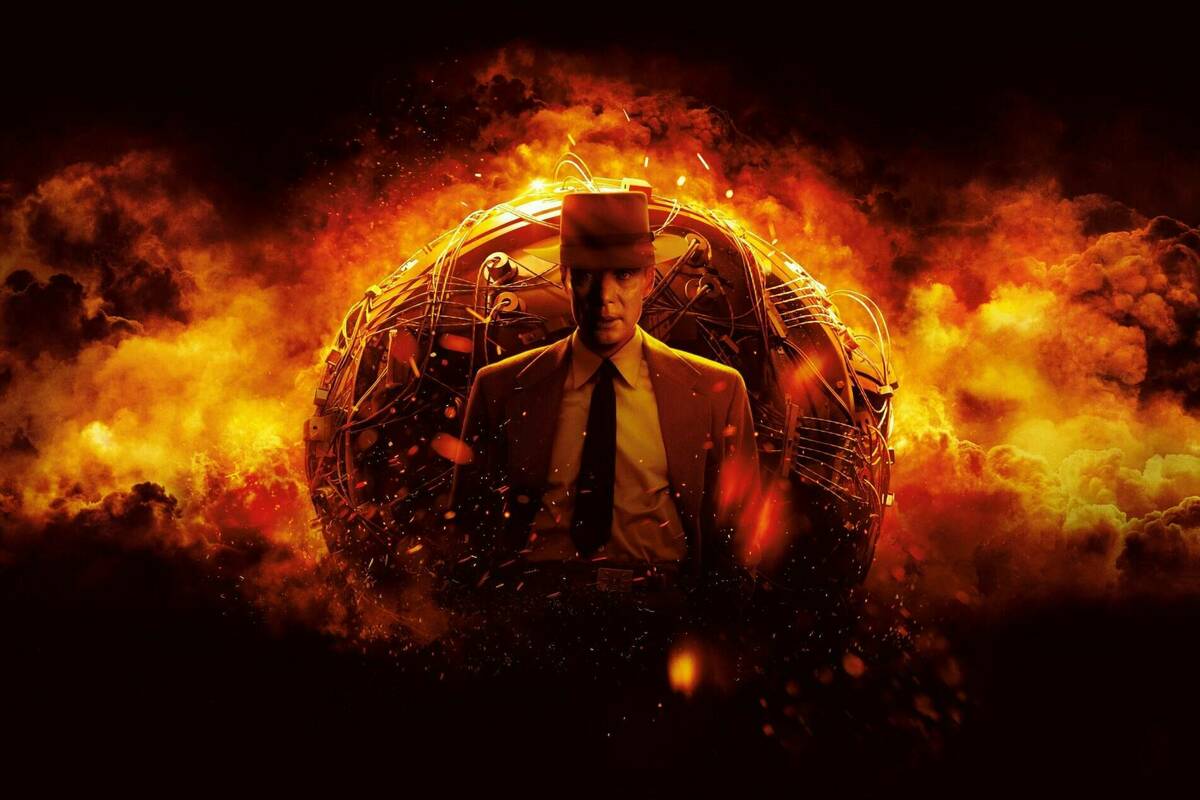SPOILER ALERT: SPOILERS AHEAD!
But of the tree of the knowledge of good and evil,
thou shalt not eat of it:
for in the day that thou eatest thereof
thou shalt surely die (Gen 2:17).
High in the sky on August 9, 1945, two B29s circled above the southern part of Japan. One of them was getting ready to drop a plutonium bomb dubbed “the Fat Man.” But it had developed a malfunction with its fuel pump, so after cloud cover made the military target of Kokura impossible, it was becoming urgent to shed its payload. This is how the second nuclear weapon ever used was detonated right over the heart of the most Catholic area of Japan, Urakami, significantly north of Nagasaki city and the Mitsubishi plant that was meant to be targeted. The Cathedral of the Immaculate Conception, painstakingly built by descendants of the persecuted Christians at the end of the nineteenth century on the very site where their forebears had been interrogated, was destroyed. The spiritual heirs to the twenty-six sixteenth-century martyrs of Nagasaki, along with their non-Christian compatriots, were vaporized, scorched, left homeless.
In Christopher Nolan’s blockbuster Oppenheimer, someone states that the first bomb must be dropped in order to show the enemy what America was capable of. But the second bomb would demonstrate the will to keep dropping them, if necessary. For a Catholic, the question nags: where does Just War Theory get to raise its hand in all this? The nobler motives of the scientists working on the Manhattan Project had to do with ending war, not perpetuating it. “Is it big enough?” Niels Bohr asks the director of the project, Robert Oppenheimer. Meaning: will it make a sufficient impression to end the war, once and for all?
From its first reference to Prometheus, punished by the gods for stealing fire and giving it to man, Oppenheimer is punctuated by mythical and religious references (the book on which the film is based is entitled American Prometheus: The Triumph and Tragedy of J. Robert Oppenheimer). Perhaps the most disturbing of these are the words from the Bhagavad Gita, spoken by Vishnu to the warrior Arjuna, with which the father of the atomic bomb is said to have marked the successful detonation of the first nuclear test at Los Alamos in July 1945: “I am become death, the destroyer of worlds.” An article on the Los Alamos website insists that Oppenheimer saw himself not as the god, but as the stricken hero, reluctant to go to war but obliged to do so. “To uphold dharma, the power which upholds the cosmos and society, Arjuna must do his duty, which is fight.”
In Nolan’s film, the human representative of Lord Vishnu—his high-priest, you might say—is Lieutenant General Leslie Groves, played with gruff conviction by Matt Damon. It is Groves who, after corralling the country’s most brilliant minds in a two-year effort to build a nuclear weapon before Nazi Germany could, gives Oppenheimer an immovable deadline. They had to have conclusive evidence of the atom bomb’s viability before the Yalta Conference in July 1945. By now Hitler had been defeated. So, what was the purpose of continuing with the project? The ends that justified the means were already being reconfigured.
Batter my heart, three person’d God. It is said (and the film references this) that Oppenheimer chose the code name “Trinity” for the first atomic test because of the John Donne poem that opens with these words. The unconscious depths from which the name arose in Oppenheimer’s mind are not available to us; but the poetry of Donne, with its tension between the sacred and the profane, was something that he shared with his former mistress, Jean Tatlock. At the time Oppenheimer dubbed the world-shattering event in the New Mexican desert with this most Christian of epithets, Jean had been dead for eighteen months. She had committed suicide. The hold of Tatlock on Oppenheimer’s psyche is something that Nolan takes pains to point up. The first time the viewer hears the famous words from the Bhagavad Gita is during their early sexual encounter.
What do you do with the snake you find, after you turn over the stone? This image is first raised by Neils Bohr in Cambridge, where the youthful Oppenheimer has apparently tried to kill his tutor with a poisoned apple. Whatever the truth behind this strange episode (it is apparently a story Oppenheimer told against himself), Nolan presents his Promethean protagonist as an obsessive visionary. Cillian Murphy’s intense and often disturbing performance drives this home. “Gravity gets to swallow everything,” as Oppenheimer says of the imploding stars that lead to black holes.
Later in the film, prompted by Bohr’s words about the serpent unleashed, Oppenheimer tries to rein in the consequences of the discovery he has helped to instrumentalize. This does not sit well with Cold War exigencies. Enter Lewis Strauss (a subtly psychopathic Robert Downey Junior), in whom wounded vanity combined with political ambition compel him to use Oppenheimer’s leftist history to destroy him. He succeeds, but is then hoisted on his own petard.
By the time we get to the end of the film, we have been drenched in every kind of power-play imaginable. While Cillian Murphy’s performance conveys the conscience-stricken horror gradually unfolding in Oppenheimer’s mind, Nolan draws his narrative arc to a close with the man, and only the man. Simultaneously on the cover of Time magazine, whilst being mocked by President Truman for speaking about having blood on his hands, the story ends in the corridors of power. As Strauss puts it: “Survival in Washington is about knowing how to get things done.”
***
Back on the ground, between the sixth and the ninth of August 1945, more than a hundred and twenty thousand Japanese civilians died immediately as the result of those two bombs, which we see leaving Los Alamos in their wooden packing cases. Hundreds of thousands died later of radiation poisoning, then cancer and other diseases resulting from the nuclear fallout. Then of course there were the victims of the atomic testing itself. Chris Nolan has referred to the geographical location of the Manhattan Project as “the desolation of where they built Los Alamos.” In fact, this was not a totally unpopulated area. The fallout from the first atomic test, not to mention the subsequent ones, affected the seemingly invisible inhabitants of the New Mexico desert. Hispanic farmers who kept sheep on the land, Navajo Indians whose territory it actually was (there is a fleeting reference to this in the film when a chastened, more circumspect Oppenheimer suggests giving the area “back to the Indians”). Not to mention wildlife. All these suffered the consequences of the atomic tests—and the rural communities went, for the most part, without compensation.
There is another film that I watched in the same week as I watched Oppenheimer, which has a somewhat different take on how the powerless suffer at the hands of worldly power. This is Alice Rohrwacher’s 2018 Lazzaro Felice (Happy as Lazzaro). The film depicts another isolated and impoverished rural community, enslaved as unpaid tobacco growers by the local land-owner (chain-smoking is the one thing that runs through both films).
It is only when the landowner’s son pulls out a mobile phone that we realize these serf-like peasants are not living in some distant historical period. Finally, they are “liberated” by the carabinieri, who transport them to the city, where they are oppressed in a different way, forced to live in a disused oil tank near the railway tracks. In one scene, people seeking work are invited to bid for casual employment by reducing the hourly wage they are prepared to accept. The first one to be taken on offers to work for just one euro an hour.
What makes Lazzaro Felice special is a magical realist atmosphere that somehow shifts the burden of indignity away from the obvious victims. More than anything else, the mysterious central character of Lazzaro embodies the very thing that is so disturbing in the ethos depicted in Oppenheimer. A seemingly simple-minded young peasant who never aggresses against a single creature, Lazzaro evolves into a holy fool over whom death and time have lost their grip. When he falls down a steep hillside and by rights should be fatally injured, the local wolves refuse to harm him, just as the wolf of Gubbio refused to harm Saint Francis. The motif of the wolf is one that Rohrwacher brings in again at the end of the film, a witness to the vulpine mendacity of “civilized” society. It is not intended to be a Christian parable (the Church comes out as badly as anyone else), but yet it is. Lazzaro, who ceases to age whilst everyone else does, ends up bringing warmth and hope to those his life touches.
In Nagasaki, there was a real-life holy fool who bears comparison to this. His name is Takashi Nagai. He was a highly intelligent doctor specializing in radiology; he was also a Christian convert. Just as Lazzaro’s innocence exposes the corruption around him, the scandalous hermeneutic of Nagasaki’s bombing is put in relief by Nagai’s response. He exhorted his compatriots to forgive the atrocity done to them, and to rebuild with faith and trust. The Franciscan thread reappears here too, for the Franciscan monastery near Nagasaki, founded by St. Maximilian Kolbe in the 1930s, was spared destruction by the sheltered position its founder chose for it: on the other side of a mountain, allowing the friars to give invaluable help to the victims of the bombing.
For his part, throughout the six years that Nagai lived on after the bomb had incinerated his wife and given him severe radiation poisoning, Nagai lived in a makeshift hut and simply tried to be of service to others. With his hospital, not to mention his health, in ruins, he carried on practicing medicine. He wrote books and counseled those who lived in despair. He embraced the Hibakusha whose keloid scarring made them the social lepers of their time.
Not far from where Nagai lived, close to the Sanno Shinto shrine that was destroyed like the Cathedral, there stands a strange architectural remnant. The ceremonial gate to the original shrine, known as a Torii: one of its legs was obliterated in the atomic blast, and its twisted lintel is supported solely by the remaining leg. A ritual gateway smashed by the bid for a knowledge that brings death in its wake, it has been wrought into something resembling a Franciscan Tau, or cross. Like the saints who occasionally lighten the darkness of our world, the maimed structure should not still be standing. And yet it is.


